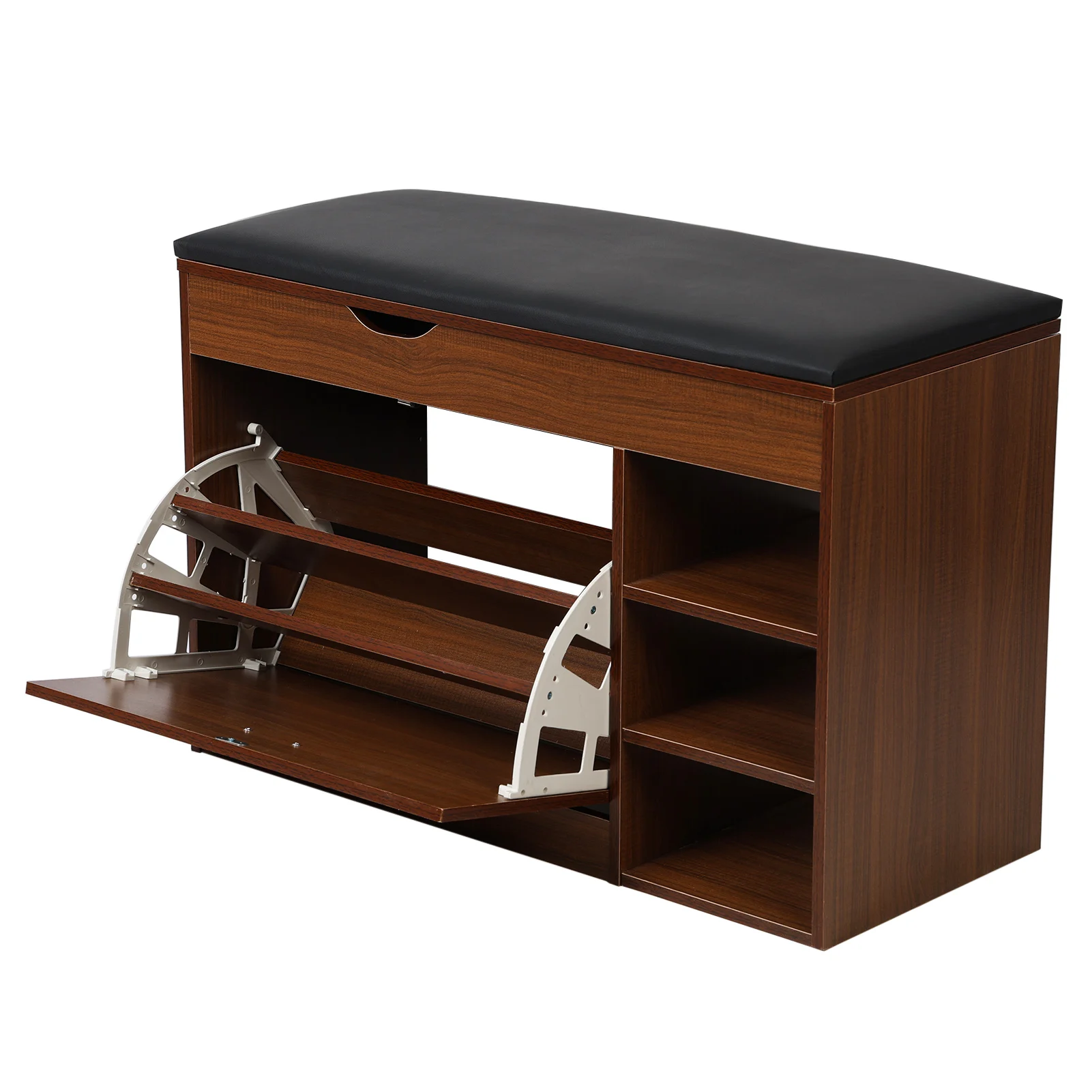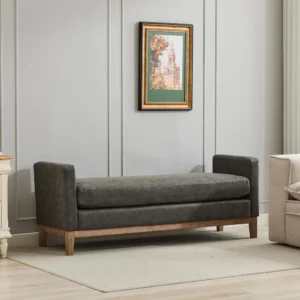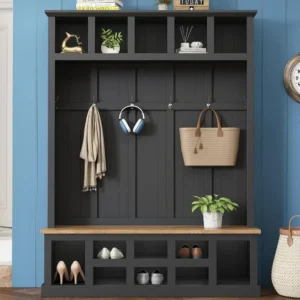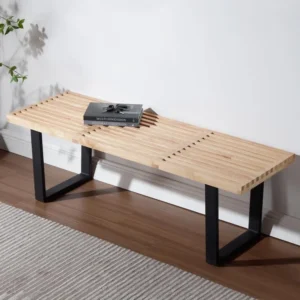The Essential Role of Mudroom Seating in Active Households
In busy homes, the mudroom serves as command central for daily comings and goings. This high-traffic area welcomes multiple family members, each with their own gear and schedules, creating unique organizational challenges. A properly designed mudroom isn’t just a luxury—it’s a necessity for maintaining order in active households.
Dedicated seating plays a crucial role in this space, forming the foundation of an effective entry and exit system. Without it, the simple act of removing shoes becomes awkward, with family members hopping on one foot or sitting on the floor. Proper functional mudroom seating solutions transform this daily ritual into a smooth transition, saving precious minutes during hectic mornings.
The benefits of thoughtful seating extend far beyond mere convenience. Quality mudroom seating creates a physical boundary between the outdoors and your clean home interior. It establishes a designated spot where outdoor elements stay contained rather than tracking through your living spaces. Studies suggest that homes with organized entry points save up to 15 minutes daily in cleaning time—adding up to over 90 hours annually!
For families juggling sports equipment, pet supplies, and children’s belongings, the mudroom seating area becomes the first line of defense against household chaos. Understanding what is a mudroom in a house and its potential helps you make strategic decisions about this often-overlooked space that can dramatically improve your home’s functionality.
Essential Qualities for High-Performance Mudroom Seating
When selecting seating for a high-traffic mudroom, certain qualities take priority over aesthetics alone. The most successful pieces balance form and function through these essential characteristics:
Durability: In busy households, durability reigns supreme. Look for:
– Solid hardwoods like oak, maple, or walnut that resist dents and scratches
– Quality hardware that won’t loosen with repeated use
– Reinforced joinery techniques like dovetail or mortise-and-tenon
– Commercial-grade materials designed for heavy use
Ease of Cleaning: Mudrooms face dirt, water, salt stains and more. Prioritize:
– Wipeable surfaces that don’t require special cleaners
– Removable cushions with washable covers
– Materials that don’t show every fingerprint or water spot
– Smooth surfaces without deep grain or crevices that trap dirt
Storage Integration: The most efficient seating serves double-duty:
– Hidden storage underneath preserves clean sightlines
– Designated spaces for frequently used items save time
– Varied storage types accommodate different items (shoes vs. gloves)
– Accessible storage that actually gets used daily
When evaluating potential options, consider real-world usage scenarios. While a plush velvet bench might look beautiful, microfiber or leather-like materials with a minimum 30,000 double-rub durability rating will better withstand daily wear. Similarly, painted surfaces should feature scuff-resistant finishes designed for high-traffic areas.
The ultimate guide to durable mudroom seating can help you navigate material choices that look beautiful while standing up to your family’s activity level. Remember that superior mudroom pieces balance beauty with performance—an investment that pays dividends through years of organized entries and exits.
For families seeking ready-made solutions, our mudroom benches collection features pieces specifically designed to meet these rigorous requirements while complementing your home’s style.
Built-In Bench Solutions: Maximizing Space and Function
Custom built-in seating represents the gold standard for mudroom efficiency, offering tailored solutions that maximize every available inch. These permanent fixtures transform awkward corners, narrow hallways, or irregularly shaped entries into functional seating areas with significant advantages:
Wall-to-Wall Utilization: Built-ins capitalize on the entire length of available wall space, creating more seating and storage than standard furniture pieces. This approach eliminates wasted gaps that typically occur with freestanding options.
Corner Optimization: L-shaped or corner configurations utilize otherwise difficult spaces, creating continuous seating that wraps around the room. These designs often provide 30-50% more usable surface area than straight benches alone.
Window Integration: Mudroom windows become assets rather than obstacles when built-ins transform the space beneath them into practical seating with storage. This approach maintains natural light while gaining functionality.
Storage Customization: Built-ins offer the most versatile storage configurations:
– Drawer systems for smaller accessories
– Lift-top bench compartments for seasonal items
– Open cubbies for frequently accessed belongings
– Custom-sized sections for specific equipment
While built-ins typically represent a higher initial investment ($800-$3,000+ depending on materials and size), they add permanent value to your home while offering unmatched space efficiency. For oddly shaped or compact mudrooms, the space optimization from built-ins often creates 25-40% more functional area than standalone furniture.
For homes with challenging corner spaces, exploring corner entryway bench options provides inspiration for maximizing these tricky areas. Whether fully custom or modified from pre-made components, corner solutions transform dead space into the most useful part of your mudroom.
Freestanding Bench Options: Versatility with Style
While built-ins shine in permanence, freestanding bench options offer flexibility that adapts to evolving family needs. These movable pieces allow you to reconfigure your space as activities change, providing adaptability that built-ins can’t match.
Versatility Advantages:
– Can be repositioned as needs change
– Move with you to new homes
– Easier to swap out for seasonal requirements
– Allow for gradual mudroom development as budget permits
Style Versatility:
Modern freestanding benches come in diverse design languages that complement your home’s aesthetic:
– Farmhouse styles with distressed finishes and simple lines
– Industrial options featuring metal frames and reclaimed wood
– Modern designs with clean lines and minimalist hardware
– Traditional pieces with elegant detailing and classic proportions
Storage Configurations:
Quality freestanding benches incorporate various storage approaches:
– Open shelving beneath for basket organization
– Shoe racks with specific footwear slots
– Cabinet doors that conceal less attractive items
– Mixed systems combining multiple storage types
For safety in busy households, secure taller bench units to the wall with anti-tip hardware—especially important for homes with young children or when placing benches on smooth flooring surfaces.
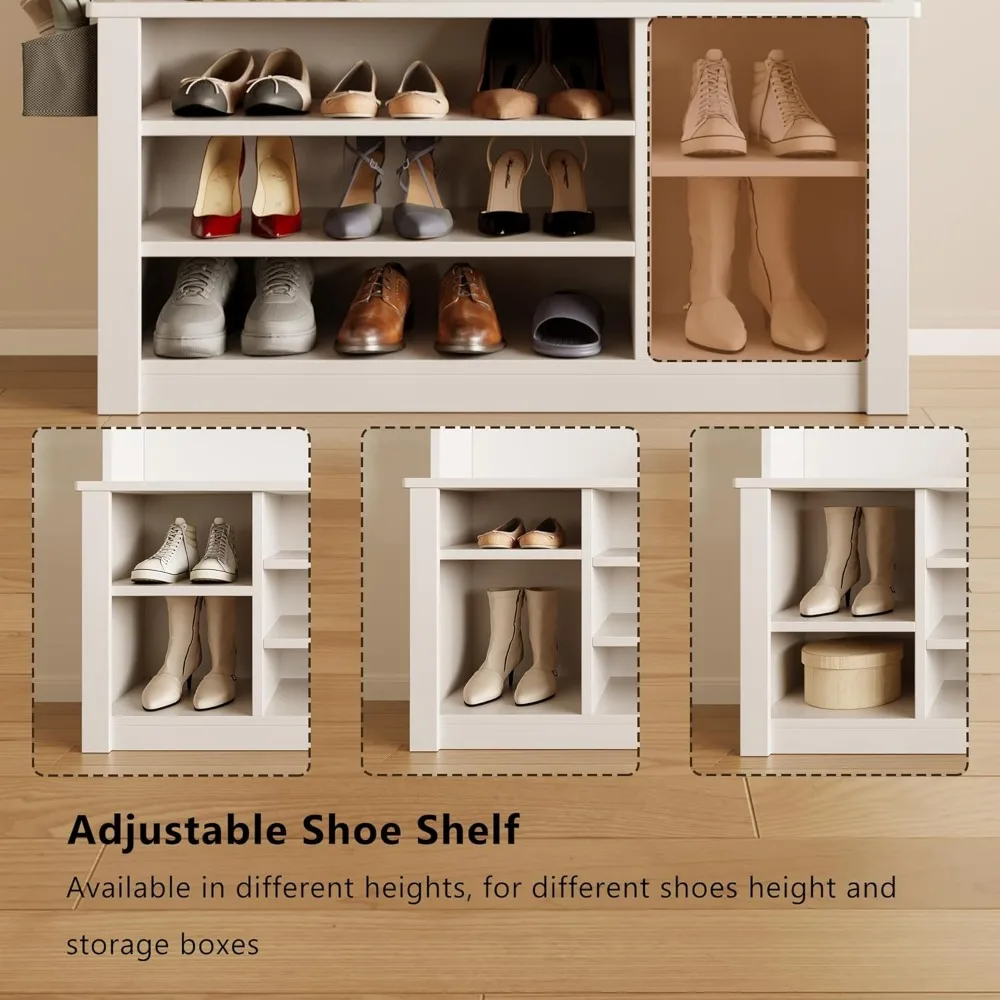
When selecting size, allow at least 18 inches of seating width per person for comfortable use. A typical family of four benefits from a minimum 48-60 inch bench, though usage patterns might require more. Height should allow adults to sit comfortably with feet flat on the floor—typically 17-19 inches from floor to seat.
Our collection of entryway bench storage options showcases versatile freestanding pieces that combine seating with practical organization systems designed for busy household demands.
Storage Bench Champions: Clutter-Busting Seating Solutions
Storage benches represent the workhorses of mudroom seating, specifically designed to contain the chaos of daily life. These specialized pieces tackle clutter while providing comfortable seating through thoughtfully engineered storage systems.
Lift-Top Storage Masters:
Hydraulic or hinged lift-top benches offer cavernous interior storage for:
– Seasonal gear (winter boots, beach supplies)
– Sports equipment
– Infrequently used items
– Bulky belongings that don’t fit elsewhere
Look for models with quality gas lifts or hinges designed for 5,000+ open/close cycles—budget options often fail within a year of daily use.
Drawer System Benefits:
Bench designs incorporating drawers provide:
– Organized, compartmentalized storage
– Easy access without removing items from the seat
– Clear visibility of contents
– Separation of family members’ belongings
For drawer systems, look for smooth-gliding hardware rated for at least 75-pound capacity and full-extension mechanisms that allow complete access to the drawer interior.
Cubby Configurations:
Open cubby systems excel for:
– Daily-use items requiring quick access
– Visual organization with decorative baskets
– Children’s gear that needs to be easily accessible
– Ventilation for damp items
The most effective mudroom bench shoe storage solutions offer specialized compartments designed to keep footwear organized and accessible. Quality designs include features like slanted shoe shelves, boot compartments, and moisture-resistant materials in these high-exposure areas.
For maximum functionality, consider capacity needs carefully. A typical adult requires storage for 4-6 pairs of seasonal shoes, plus additional space for gear appropriate to your climate and activities. Households with multiple children may need to double these estimates.
Storage bench designs that incorporate multi-functional mudroom benches principles serve busy households best by addressing multiple needs simultaneously while maintaining a cohesive, attractive appearance.
Individual Seating Solutions: Flexible Options for Varied Needs
For households seeking maximum adaptability or working with limited space, individual seating pieces offer compelling advantages over traditional bench configurations. These versatile options provide customized solutions for unique spaces and family dynamics.
Space-Saving Advantages:
– Stackable stools can be nested when not needed
– Compact ottomans occupy minimal floor area
– Individual pieces can be dispersed throughout the space
– Easier to accommodate in awkward or narrow entryways
Adaptability Benefits:
– Move pieces where needed as activities change
– Arrange for different numbers of users
– Adjust to growing children’s changing heights
– Create varied seating heights for different tasks
Creative Applications:
– Storage ottomans that double as side tables
– Nesting cube sets that expand for guests
– Rolling stools that move to where they’re needed
– Child-height seating that grows with your family
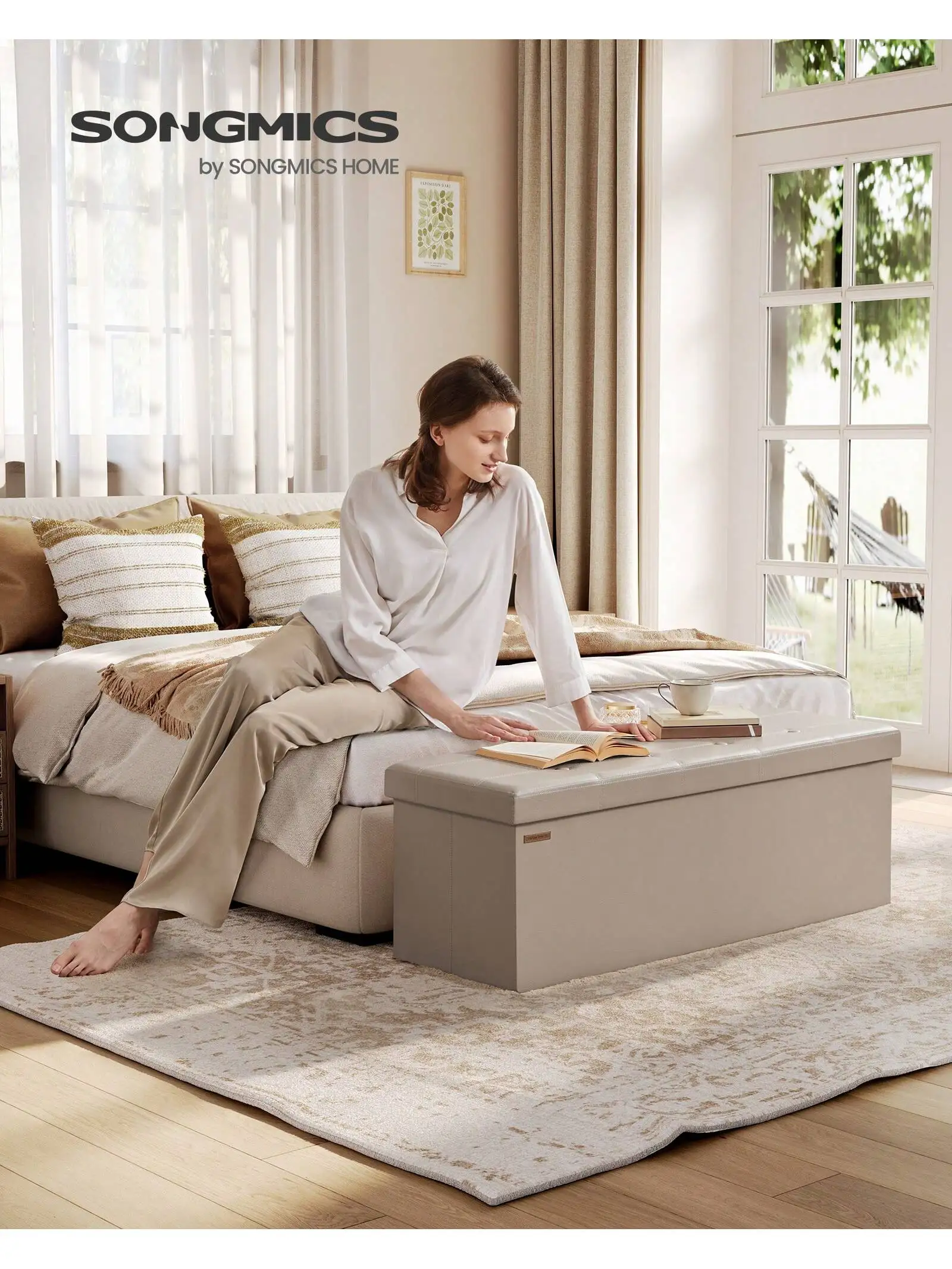
When selecting individual seating, consider height variations for different users. Adult-appropriate seating typically measures 17-19 inches high, while children are more comfortable with 12-16 inch heights depending on age. Some clever designs offer adjustable heights or convertible features to accommodate growing families.
For homes with extremely limited space, small shoe bench options provide compact seating with integrated storage specifically designed for tight quarters. These space-efficient pieces often include smart features like vertical shoe storage or slim profiles that fit in narrow hallways.
Entryway Bench with Cushion, Mudroom Bench with Cushion, Shoe Bench for Entryway
$1,186.63 Select options This product has multiple variants. The options may be chosen on the product pageCoat Rack Shoe Bench, Corner Entryway Bench, Corner Hall Tree, Shoe Bench for Entryway
$313.58 Select options This product has multiple variants. The options may be chosen on the product pageCorner Entryway Bench, Entryway Bench with Cushion, Modern Entryway Bench, Shoe Bench for Entryway
$476.34 Select options This product has multiple variants. The options may be chosen on the product pageBench with Hooks and Storage, Entryway Hall Tree, Mudroom Bench with Cubbies, Mudroom Bench with Shoe Storage
$818.38 Select options This product has multiple variants. The options may be chosen on the product pageModern Entryway Bench, Wood Entryway Bench, Wood Mudroom Bench
$497.69 Select options This product has multiple variants. The options may be chosen on the product pageEntryway Coat Rack Bench, Entryway Hall Tree, Farmhouse Mudroom Bench, Mudroom Bench with Shoe Storage
$805.09 Select options This product has multiple variants. The options may be chosen on the product page
Individual seating works particularly well when combined with comprehensive organization systems that address storage needs separately from the seating function, creating a modular approach to mudroom design.
Genius Vertical Storage to Pair with Seating
Maximizing vertical wall space dramatically multiplies your mudroom’s functionality while complementing seating choices. Strategic vertical storage transforms limited square footage into organized systems that keep daily essentials visible, accessible, and contained.
Locker Systems:
Individual locker units create personal zones for family members, featuring:
– Designated space for coats, bags, and accessories
– Accountability for personal belongings
– Customized storage based on individual needs
– Clear boundaries that minimize conflicts
Hook Strategies:
Thoughtful hook placement makes a significant difference:
– Install at appropriate heights for different users (40” for children, 60” for adults)
– Use heavy-duty hardware rated for at least 25 pounds per hook
– Include multiple heights for various item lengths
– Space properly to accommodate bulky winter coats (12” minimum between hooks)
Shelving Configurations:
Well-designed shelf systems contribute to organization:
– Open shelving for frequently used items
– Enclosed cabinets for visual containment
– Floating shelves that maintain open feeling
– Adjustable systems that evolve with changing needs

Integrated systems like entryway hall tree units combine seating, hooks, and storage in cohesive pieces designed specifically for entry organization. These all-in-one solutions work particularly well in smaller spaces where separate components might feel disjointed or overwhelming.
For comprehensive functionality, maintain a visual balance between vertical and horizontal elements. Overloading walls can create a cluttered feeling, while too little vertical storage wastes valuable organizational space. The most successful designs maintain approximately 60% wall coverage, leaving breathing room that prevents a cramped appearance.
Understanding the differences between mudroom storage vs entryway approaches helps you select vertical elements that complement your specific space constraints and functional requirements.
Under-Seating Organization: Maximizing Every Inch
The space beneath mudroom seating represents prime real estate for targeted storage solutions. Smart under-bench organization systems transform this often-overlooked area into specialized zones that keep daily essentials perfectly arranged and easily accessible.
Pull-Out Shoe Storage:
Specialized shoe drawers and trays offer significant advantages:
– Conceals footwear while keeping it accessible
– Prevents the “shoe pile” effect common in busy homes
– Incorporates dividers for paired organization
– Slides away completely when not needed
Basket Systems:
Removable baskets create flexible organization:
– Allows for quick cleanup by gathering loose items
– Creates portable storage that moves where needed
– Offers visual containment with attractive materials
– Provides ventilation for damp items
Moisture Management:
In regions with wet weather, specialized features help:
– Waterproof boot trays catch drips and debris
– Ventilated platforms allow air circulation
– Moisture-resistant materials prevent damage
– Removable components for seasonal cleaning
For maximum functionality, align under-seating storage with your family’s specific needs. Athletic households benefit from specialized compartments for sports equipment, while homes with young children might prioritize easily accessible toy storage containers that encourage independent cleanup.
Benches with integrated mudroom bench cubbies combine seating with organized storage spaces for a complete solution. These thoughtfully designed pieces often include compartments sized specifically for common mudroom items like shoes, gloves, and pet supplies.
When selecting under-seat storage, ensure measurements accommodate your family’s actual belongings. Standard shoe compartments (typically 8”W × 14”D × 6”H) may be insufficient for work boots or men’s athletic shoes, which often require custom sizing for comfortable fit.
Designing for Family Dynamics: Practical Considerations
Creating a truly functional mudroom requires understanding the specific needs of your household members. Thoughtful design accommodates everyone from toddlers to teens to grandparents—and even four-legged family members—through intentional planning.
Kid-Friendly Elements:
Children benefit from age-appropriate features:
– Lower hooks placed at 30-40 inches for independent use
– Step stools that enable access to higher storage
– Simple organizational systems that encourage independence
– Durable materials that withstand enthusiastic use
– Label systems using pictures for pre-readers
Pet-Accommodating Design:
Four-legged family members need consideration:
– Designated storage for leashes, toys, and supplies
– Washable materials that resist pet hair and accidents
– Protected corners and edges that won’t damage easily
– Space for pet beds or crates as appropriate
– Specialized cleaning tool storage
Sports Equipment Management:
Active families require specialized storage:
– Vertical holders for bats, sticks, and racquets
– Ventilated compartments for damp gear
– Heavy-duty hooks for backpacks and equipment bags
– Deeper cubbies for bulky items like helmets
– Seasonal rotation systems for changing activities
For multi-generational households, incorporate seating at various heights and with different levels of support. Standard bench height (17-19”) works for most adults, while 14-16” heights better accommodate children and those with mobility concerns who benefit from higher seating positions.
Planning effective mudroom bench layouts for families involves careful attention to traffic patterns, ensuring adequate clearance (minimum 36” pathways) and anticipating pinch points during busy transitions when multiple family members use the space simultaneously.
Material Spotlight: Durability Meets Style
Selecting appropriate materials determines both the longevity and appearance of your mudroom seating. The most successful choices balance beauty with performance, creating spaces that remain attractive despite demanding daily use.
Woods for Longevity:
Hard-wearing wood options include:
– White oak (1360 on the Janka hardness scale)—resists dents and scratches
– Maple (1450 Janka)—holds up to heavy use with minimal damage
– Hickory (1820 Janka)—extremely durable for highest-traffic areas
– Quality plywood with hardwood veneer—stable and resistant to warping
Performance Fabrics:
For upholstered elements, look for:
– Solution-dyed acrylics or olefins with 30,000+ double rub durability
– Crypton or similar performance treatments for stain resistance
– Removable, washable covers for easy maintenance
– Indoor/outdoor rated fabrics that resist moisture and fading
Hardware Quality Indicators:
Functional components should feature:
– Soft-close mechanisms on drawers and cabinets
– Full-extension drawer slides rated for appropriate weight
– Solid brass or stainless steel hinges (avoid zinc alloys)
– Heavy-duty construction rated for commercial applications
The wood mudroom bench collection from Nested Goods features carefully selected materials specifically designed to withstand mudroom challenges while maintaining beautiful appearances. These pieces combine attractive finishes with engineering that anticipates daily wear and tear.
When evaluating materials, consider maintenance requirements alongside durability. Even the most resilient options require appropriate care—some materials demand more frequent attention but offer superior longevity, while others provide easier maintenance but might need replacement sooner.
Style Without Sacrifice: Aesthetic Approaches for Busy Mudrooms
Creating a mudroom that’s both beautiful and battle-ready requires strategic design decisions. The most successful spaces maintain aesthetic appeal while standing up to heavy use through thoughtful style choices.
Color Strategy:
Smart color selections conceal daily wear:
– Medium-toned neutrals hide dust and minor soiling
– Textured or patterned fabrics disguise inevitable marks
– Strategic color-blocking places darker shades in high-contact areas
– Nature-inspired palettes naturally complement outdoor elements
Material Harmony:
Mix textures for interest and practicality:
– Smooth, wipeable surfaces for high-touch areas
– Textured elements that mask minor soiling
– Varied materials that add visual interest while serving functions
– Consistent undertones that create cohesion across different surfaces
Style Integration:
Your mudroom can complement your home’s overall aesthetic:
– Modern farmhouse: Combine shiplap with industrial metal elements
– Contemporary: Clean lines with hidden storage and minimal hardware
– Traditional: Classic profiles with detailed trim and warm wood tones
– Transitional: Blend classic forms with updated finishes and mixed materials
Accessories play crucial roles in both function and style. Look for washable cushions and pillows, water-resistant storage baskets, and decorative elements placed above splash zones. These removable touches allow seasonal refreshes without major renovation.
Well-designed mudrooms also incorporate proper lighting—both ambient illumination for general visibility and task lighting that illuminates specific areas like shoe storage or coat hooks. Proper lighting transforms a utilitarian space into a welcoming entry that sets the tone for your entire home.
For homes struggling with morning rushes, conquering morning chaos with entryway organization depends on creating systems that look beautiful while functioning flawlessly under pressure.
Implementation Paths: DIY, Ready-Made, or Custom Solutions
Three primary approaches to creating mudroom seating exist, each with distinct advantages depending on your budget, timeline, and personal skills.
DIY Projects:
– Cost Range: $200-800 in materials
– Timeline: 1-3 weekends for basic designs
– Skill Requirements: Moderate carpentry skills for basic benches; advanced skills for built-ins
– Advantages: Complete customization, cost savings, personal satisfaction
– Challenges: Requires tools and expertise; potential for mistakes; time commitment
Ready-Made Options:
– Cost Range: $300-2,000 depending on materials and features
– Timeline: Immediate to 6 weeks (for shipping)
– Skill Requirements: Basic assembly only
– Advantages: Immediate solution; professional finish; warranty protection
– Challenges: Limited customization; potential size mismatches; quality variations
Custom-Built Solutions:
– Cost Range: $800-5,000+ depending on complexity
– Timeline: 4-12 weeks typically
– Skill Requirements: None (hired professional)
– Advantages: Perfect fit; professional craftsmanship; exactly matches needs
– Challenges: Higher cost; scheduling dependencies; finding qualified professionals
When evaluating ready-made options, examine construction details that indicate quality:
– Solid wood components in high-stress areas
– Dovetailed or reinforced drawer construction
– Smooth-operating hardware
– Properly finished surfaces including unseen areas
– Substantial weight indicating quality materials
For those unsure which direction best suits their needs, mastering mudroom bench styles provides guidance on selecting approaches that align with your specific requirements, helping you determine whether DIY, ready-made, or custom solutions best serve your household.
Longevity Strategies: Maintaining Your Mudroom Seating
Proper maintenance ensures your mudroom seating remains beautiful and functional for years to come. A simple care routine protects your investment and prevents premature wear.
Daily Care Routine:
– Quick wipe-down of high-touch surfaces
– Removal of visible debris and soil
– Repositioning of cushions to distribute wear
– Emptying of water collection trays after rainy days
Weekly Maintenance:
– Thorough cleaning of seating surfaces
– Vacuuming of upholstery and floor areas
– Organization reset to maintain systems
– Spot treatment of any stains before they set
Seasonal Tasks:
– Spring: Deep cleaning of all surfaces; wash removable cushion covers
– Summer: Treat wood surfaces with appropriate conditioners
– Fall: Clean and prepare boot storage areas before winter weather
– Winter: Monthly salt residue removal from surfaces and floors
For common repair needs, keep a simple kit containing:
– Touch-up markers or pens matching your wood finishes
– Wood filler for minor dents and scratches
– Extra hardware matching your existing pieces
– Quality lubricant for drawer slides and hinges
Most seating options benefit from annual hardware tightening, as daily use inevitably loosens connections over time. This simple maintenance step prevents wobbling and potential structural issues that could compromise safety.
With proper care, quality mudroom seating typically provides 10-15 years of service before requiring significant refurbishment—making it one of the most durable and valuable furnishings in busy family homes.
Real-Home Solutions: Inspiration Gallery
Successful mudrooms come in all shapes and sizes, proving that effective organization doesn’t require vast spaces or unlimited budgets. These real-world examples demonstrate creative approaches to common challenges.
Narrow Hallway Transformation
A 4-foot wide entry hallway became a functional mudroom through clever vertical storage paired with a slim bench. Wall-mounted hooks and shelving maximize vertical space while a narrow bench (just 12 inches deep) provides essential seating without impeding traffic flow. The homeowners added labeled baskets above for each family member, creating personal drop zones in minimal space.
Multi-Functional Laundry Combination
By reconfiguring an existing laundry room, this family created a dual-purpose space that handles both dirty clothes and entry organization. A bench with washer-height surface serves double duty for folding and seating, while tall cabinets conceal seasonal items. Washable indoor/outdoor rugs define the mudroom zone while standing up to inevitable moisture.
Pet-Centric Organization
This thoughtfully designed space incorporates dedicated pet features including built-in food storage, leash hooks at separate heights for different dogs, and a pull-out drawer containing portable paw-washing equipment. A durable bench with waterproof cushion provides seating for humans while offering pets a designated spot during preparation for walks.
Budget-Friendly Makeover
Using primarily existing furniture and affordable additions, this family created an organized entry for under $300. They repurposed a basic storage bench with added cushion, installed simple hook rails at varied heights, and incorporated inexpensive fabric bins for containment. The cohesive look comes from consistent paint colors and coordinated fabric choices.
These examples demonstrate that designing a functional mudroom doesn’t require massive renovation or perfect spaces. Strategic planning and organization systems tailored to actual daily needs yield results that improve family life regardless of spatial or budgetary constraints.
Your Mudroom Seating Success Plan
Creating your ideal mudroom begins with a clear assessment of your unique household needs. This systematic approach ensures your solution addresses your specific challenges rather than generic recommendations.
1. Needs Assessment
Begin by documenting your household’s actual patterns:
– How many people regularly use the entry?
– What items need consistent storage (shoes, bags, sports gear)?
– What are your biggest current entry frustrations?
– Do you have pets requiring special accommodations?
– What seasonal items need rotating storage?
2. Space Evaluation
Measure your available area carefully:
– Width and length of usable wall space
– Ceiling height for vertical storage potential
– Door swing clearances and traffic patterns
– Existing features to work around (windows, outlets)
– Flooring considerations for cleaning and durability
3. Priority Identification
Rank your must-haves versus nice-to-have features:
– Essential seating capacity
– Minimum storage requirements
– Specific organizational needs
– Style and aesthetic goals
– Budget constraints
4. Solution Selection
Based on your assessment, determine which approach best fits your situation:
– Ready-made pieces for standard spaces and immediate needs
– Custom solutions for challenging dimensions or specific requirements
– DIY projects for budget-conscious or highly specific adaptations
5. Implementation Timeline
Create a realistic schedule, particularly for multi-phase projects:
– Immediate organization with existing furniture
– First-phase seating addition
– Secondary storage implementation
– Final styling and customization
By approaching your mudroom seating project methodically, you create solutions that truly serve your family rather than simply mimicking design trends. Remember that the most beautiful mudroom is one that actually works for your unique household patterns and requirements.
Whether you choose built-ins that maximize every inch or flexible individual pieces that adapt to changing needs, successful mudroom seating combines thoughtful organization with durable construction to create order amid the beautiful chaos of busy family life.

